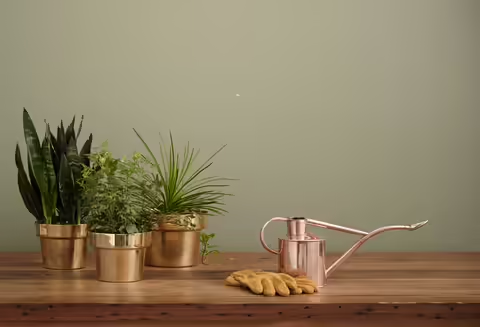
URBANA, Ill. – Dreading the long cold months of winter? Create a green space indoors with plants.
Historically, plants have been used for their medicinal properties. Growing movements like horticulture therapy use plants for their healing properties, individual health, and well-being.
We can engage with plants actively, by pruning or watering, or passively, by enjoying the sight or scent of a plant or flower. This is especially beneficial to those with limited mobility or limited communication skills. Research has shown that both active and passive interactions with plants and gardening experiences can have a pronounced positive effect on physical and psychological functioning.
How to bring the outdoor plants inside
To build an indoor garden, select plants to bring indoors or purchase some new plants. It’s a little late in Illinois to be moving plants from outside to indoors, but there are a few things to consider for a smooth transition.
- Monitor the temperature: Move houseplants inside before night-time temperatures get below 45°F.
- Watch out for hitchhikers: Before moving houseplants indoors, check leaves, stems, and soil thoroughly for pest problems. Common pests are aphids, scale, mealybugs, and spider mites. Spray any pests with insecticidal soap. Give plants a good wash with a strong spray of water to dislodge any undetected hitchhikers.
- Time to acclimate: Slowly acclimate plants to lower light levels by placing them in shaded areas for a couple of weeks before the transition to indoors. This is also a good time to trim overgrown plants and remove any dead leaves.
- Reduce watering and fertilizing: Plants need a period to rest from growth and flowering. During colder months the need for water and fertilizer is lower. Provide enough water so that the plants do not dry out completely.
- Provide light and humidity: Bright, indirect light is necessary. Remember, photosynthesis is how the plant makes food. If an area is darker, consider adding grow lights. As heated homes typically have dry air, use a humidifier or mist plants daily to keep leaf tips from turning brown.
Once plants have been successfully transitioned indoors the most important factor in creating a relaxing atmosphere using plants as a backdrop is you.
Tropicals: Tropical plants make excellent indoor plants as they stay green through the winter. These plants can be used to create terrariums or teacup gardens. Propagation of tropical plants is a perfect activity for self-reflection and goal setting as plants have roots that may open the door to help an individual grow new roots in their lives. Create a simple propagation chamber using a zippered bag to provide a humid environment to support the plants in creating new roots. Spider plants, Christmas cacti, peperomia are easy plant propagation selections.
Get Crafty: For crafty individuals, try using spent flower and even leaves to make paper. Other ideas include forcing bulbs like paperwhite bulbs, tulips or amaryllis indoors. Use last year’s gourds to create beautiful painted birdhouses for the spring arrivals, make scented pinecones or gumballs with a favorite essential oil.
Plan next season’s garden: Decide what should be planted or what plants you want to harvest. Two excellent resources are newly released All America Selections award winners for the upcoming year and Proven Winners selections. Keep a journal of pictures of favorite plants and new seed introductions from seed catalogs. Try something new! Research and plan a themed garden such as a sensory garden or a moonlight garden. It is also a good time to think about ordering seeds for the upcoming gardening season. Read seed package labels to determine when and how to start seeds indoors. Each year try a new variety or color to add interest.
For more research-based information on tree care, connect with your local Illinois Extension county office at go.illinois.edu/ExtensionOffice.
ABOUT EXTENSION: Illinois Extension leads public outreach for University of Illinois by translating research into action plans that allow Illinois families, businesses, and community leaders to solve problems, make informed decisions, and adapt to changes and opportunities.
